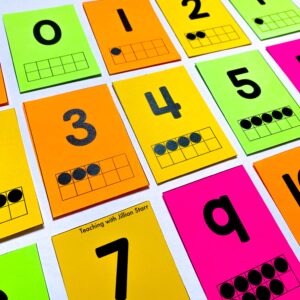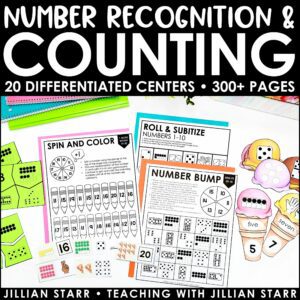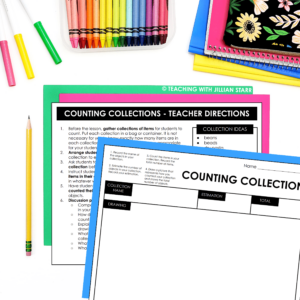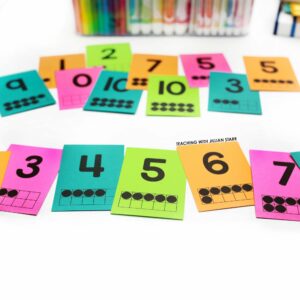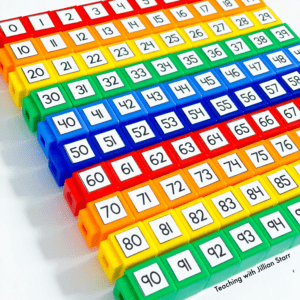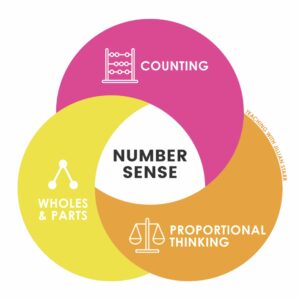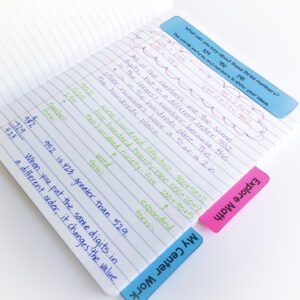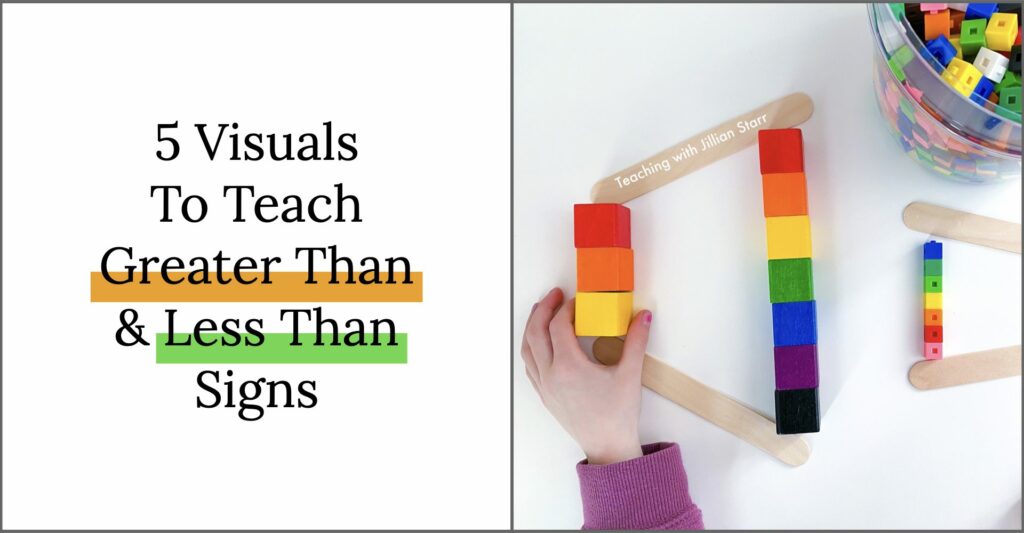
There are some very strong opinions when it comes to how to teach greater than, less than, and equal. And even stronger opinions when we start talking about greater than and less than signs.
The biggest issue is that too often the focus is on the greater than and less than signs themselves, and not the understanding of comparisons. If we’re only teaching students which way the symbols go, then we’re doing our students a big disservice. (I shared a lot more about this in my post on comparing numbers!)
Today I am going to share five visuals that are often used to teach the greater than and less than signs to young students. As we go through them, I want us to really consider the following questions:
- Is the focus of teaching more on the symbol or the comparison?
- Are we assessing the understanding of comparing quantity, or the proper usage of symbols?
- Are we teaching the symbols in connection to the language, or just ensuring that they face the proper direction?
Hidden in the Number Line
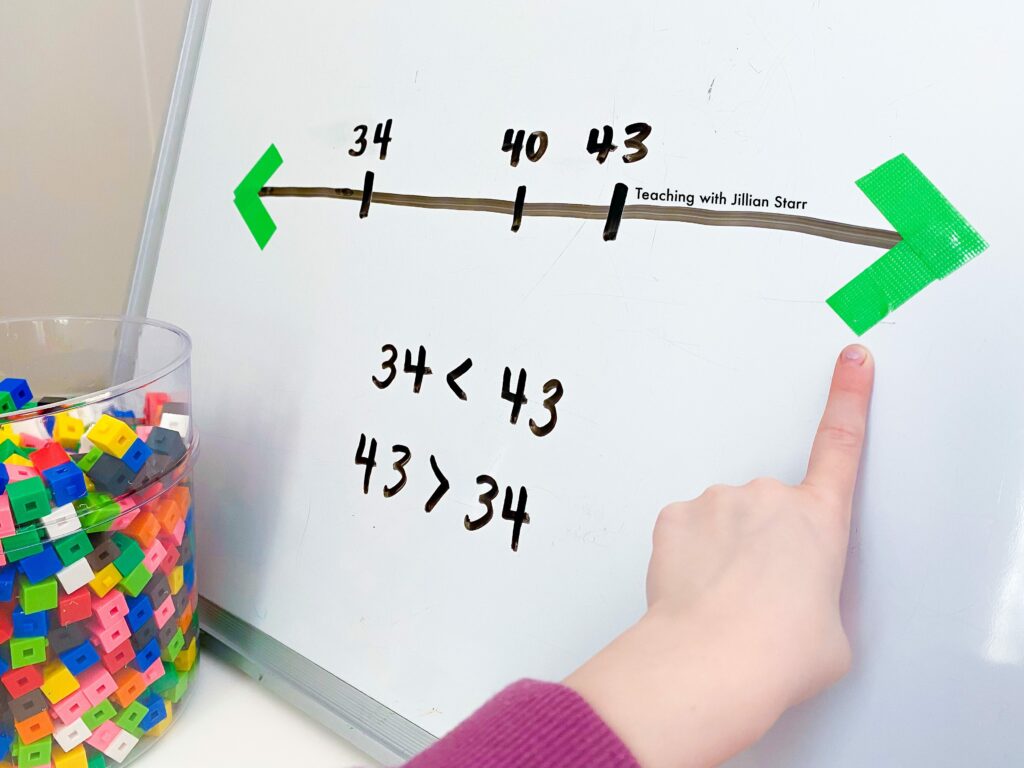
Have you ever noticed that the greater than and less than signs are embedded in number lines? This can be a powerful visual for several reasons. First, I love that it encourages students to think about comparing numbers on a number line. While increments and range may vary on number lines, one thing that remains the same is that the greater number is always on the right, and the smaller number is always on the left.
When we think about the embedded greater than and less than signs in the number line, we can see the connection between the greater number on the right and the greater than sign. Similarly, we can see the connection between the number that is less on the left and the less than sign.
This visual checks all of the boxes for me: The visual itself is connected to the concept of quantity AND it also helps students connect the language “greater than” and “less than” to the greater than and less than signs.
Less Makes an L
This one was used when I was growing up to help us connect the greater than and less than signs to the language. We were told to make an L with both hands. The left hand will make an L like “less than,” and that’s how we could remember how to “read” the symbols.
As a dyslexic student, it confused me (because I often reverse my L’s), but as an adult, I still look to my hands at times to remember how to read the language of “less than” aloud.
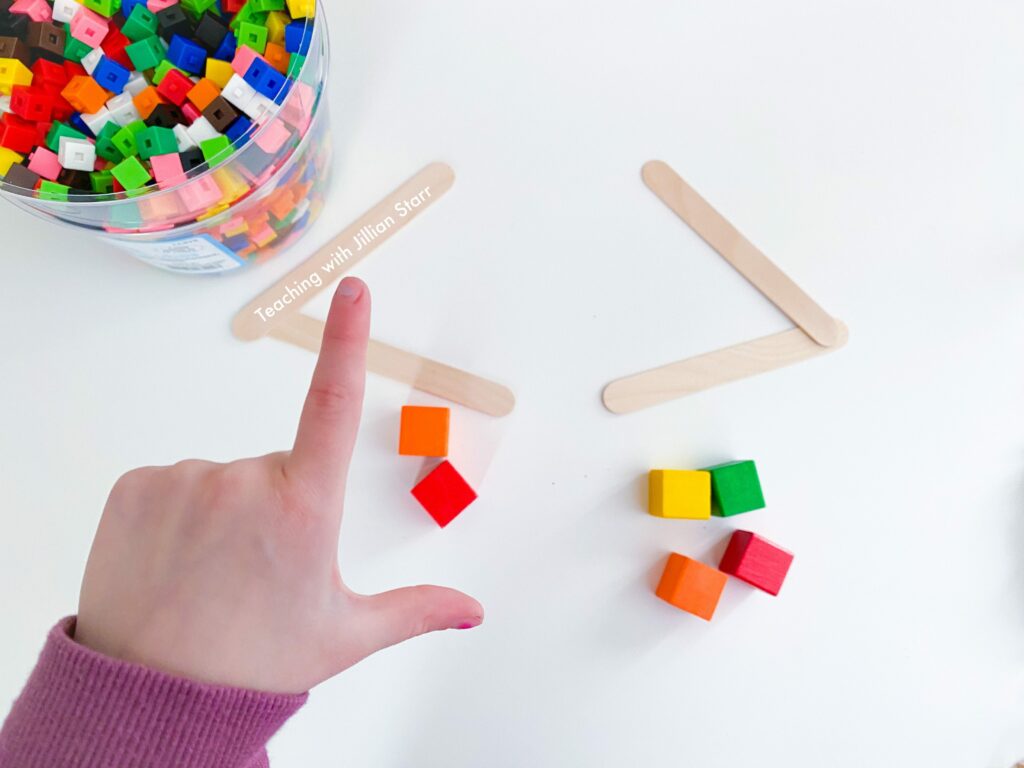
Important Note: This works for me because I have a solid understanding of comparing quantities, and this simply helps me remember the symbol that I can use to communicate that understanding. Without having that firm understanding first, this would just be another quick trick to get the answer right without ever understanding the actual content (which we want to avoid).
Hungry Alligators and Crocodiles
I am including this popular visual because it is a widely used convention when teaching greater than and less than signs, and it deserves discussion.
Again, I don’t necessarily have a problem with using little visual support to help students make connections with these symbols. The alligators (and the symbols they are helping to illustrate) are not the core content. The content is understanding quantity and how to compare numbers This is just remembering which symbol to use to describe that understanding.
The problem that many upper-grade teachers report is that unlike “L is for Less Than,” the alligators fail to help students connect the language of comparison to the symbols. The alligators simply teach which way the symbol goes. If we don’t find a way to help students READ the symbols as “54 is greater than 32,” we haven’t actually taught them the symbol… only the direction to place it to score the answer right on paper.
The Dot Method
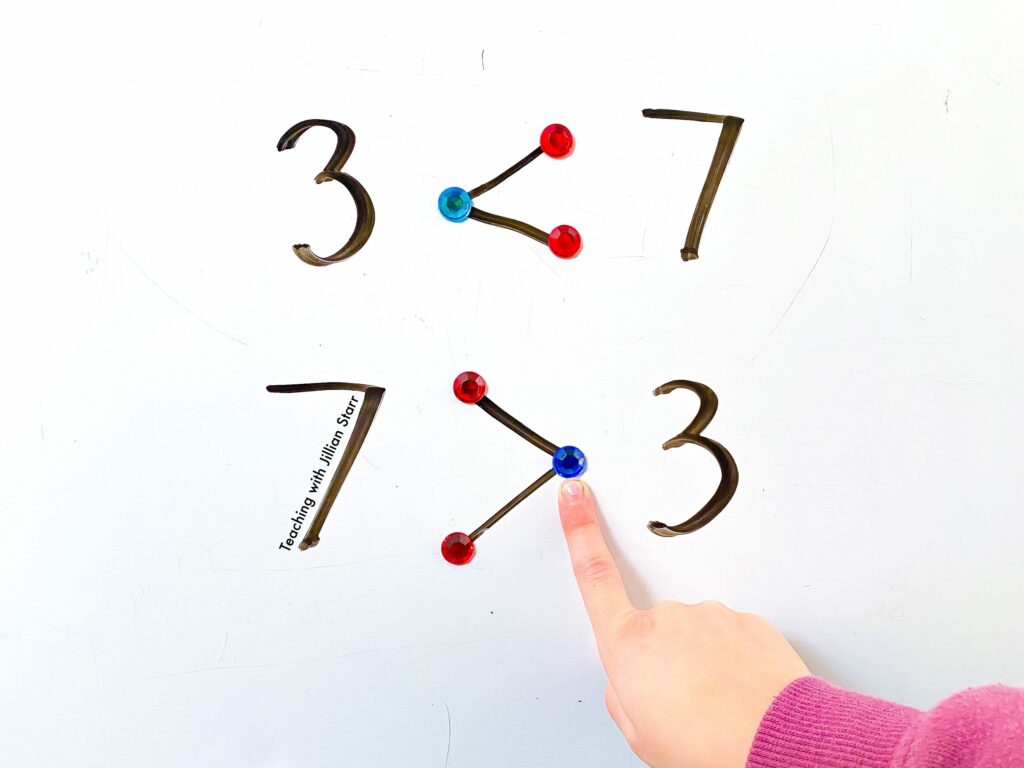
Similar to the alligators, The dot method is another “trick” to help students remember which direction the greater than and less than signs go. To put it simply, the two dots face the greater number, and the one dot faces the smaller number because two is greater than one.
I learned the dot method from a colleague a number of years ago. I really liked it in comparison to the Hungry Aligator Method (see below) because it cut down on the time my students wasted drawing all of the teeth! HA! Instead, they would simply draw the dots until they no longer needed that extra scaffolding.
One thing to think about when using the dot method is that while it might prove a time-saving (and possibly less “cutesy”) visual, it does not naturally link the language of “greater than” and “less than” to their symbols. Our upper-elementary colleagues will be grateful to no longer see teeth drawn onto their worksheets, but may still be frustrated that students are coming without being able to read the language of these comparisons.
Visualizing Quantity
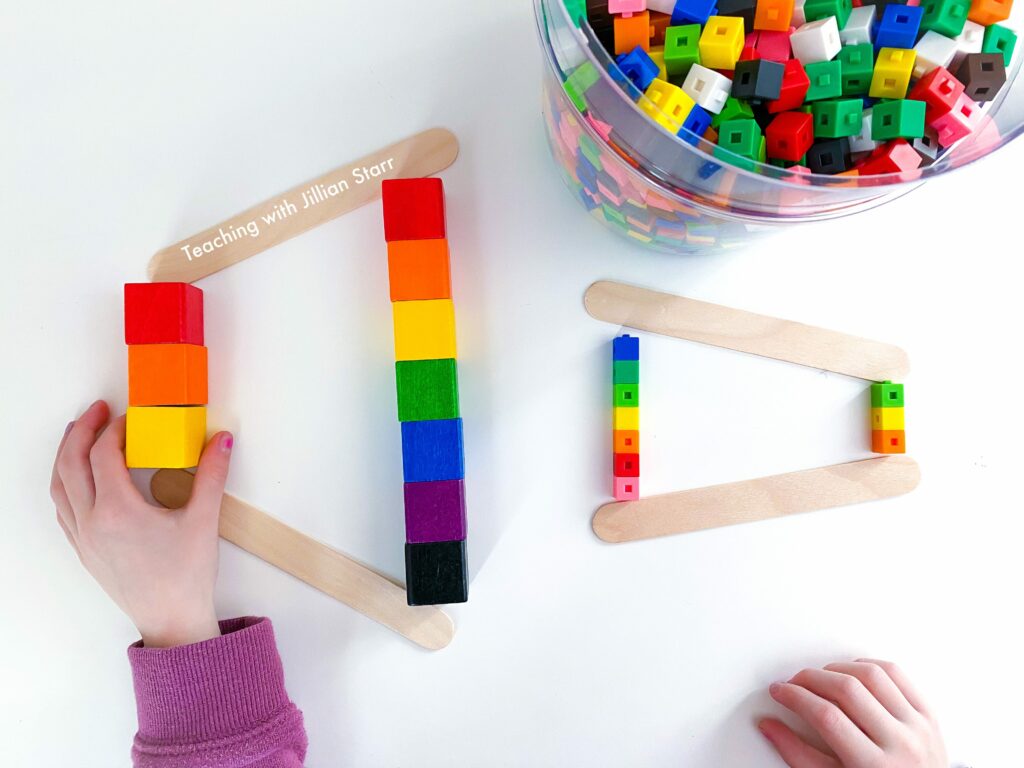
This way of introducing greater than and less than signs helps to concretely connect the concept of quantity to the symbols of comparison. Here students can physically build the numbers and then the signs with them.
For example, if we are comparing 3 and 7, students can build their towers of three and seven. Then, using any flat material (rulers, straws, popsicle sticks…etc), see which way to place the symbol and express the comparison. (These large and small blocks are both from Lakeshore Learning.)
This may still take some work to link the verbal language to the greater than and less than signs, but I love it as an introductory experience. The concrete nature of this visual definitely lays a great foundation for building and connecting our understanding of quantity to the language and symbols we use to describe comparisons.
Which Should We Use to Teach Greater Than and Less Than Signs?
I think it’s important to remember that these symbols are simply a convention. They do not necessarily represent the knowledge or understanding of comparing numbers. Greater than and less than signs are the symbols we have attached to concepts. Therefore let’s make sure that we spend MOST of our efforts ensuring that students understand the comparisons themselves and have the language to communicate that understanding.
As for which visual is the best? I think you can use any combination of these successfully as long as there we go back to our three guiding questions:
- Is the focus of teaching more on the symbol or the comparison?
- Are we assessing the understanding of comparing quantity, or the proper usage of symbols?
- Are we teaching the symbols in connection to the language, or just ensuring that they face the proper direction?
If our students can compare groups of objects, compare numbers, have the language to support those comparisons, AND connect that language to greater than and less than signs, then we are on the right track! (And our upper-elementary teachers will thank us!)

